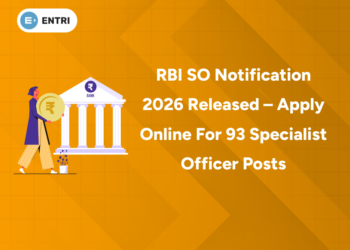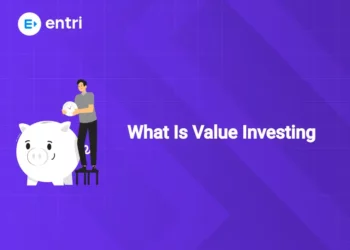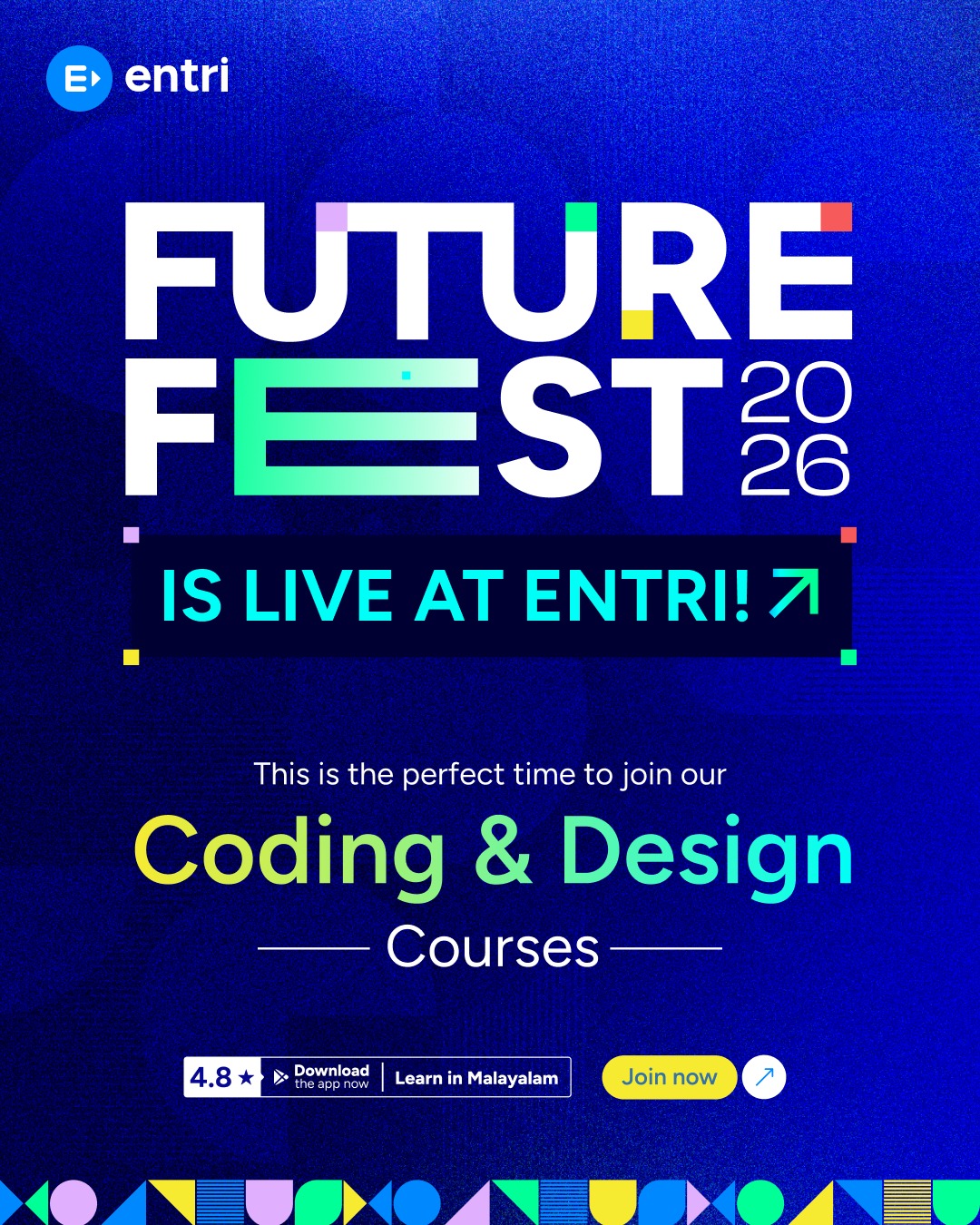As the name implies, Full Stack Development is the merging of both frontend and backend components in the life of a web application. The web development process is divided into three stages, The presentation layer collaborates with the frontend component to build the user interface, the Database layer handles data storage tasks such as retrieval, storage, and update and the Logic layer handles all data validation and logical operations in the interface’s backend. To put up a full web application, each of these levels needs the efforts of an expert. Having a lot of personnel working on these areas, on the other hand, will add complexity and cost to the organization. As a result, the majority of firms are searching for Full Stack Developers that are comfortable working with numerous stacks. If you wish to become a full-stack developer, this blog will help you to to Land a Full Stack Developer Job Without a Tech Degree or Work Experience.
Join Entri and build a career in Full Stack Development
A Full Stack Developer is a software engineer who is skilled in both server-side and client-side programming. Frontend development languages, backend development approaches, server management, and Application Programming Interface (API) design, as well as dealing with version control systems, are all part of what defines a Full Stack Developer. Full Stack Developers guarantee that the end-to-end web application runs smoothly. Full Stack Developers can play numerous roles in the application development process, decreasing costs and time to address problems significantly. Full Stack Developers may actively debug applications as they are being developed, as well as assist in testing and actively building contingency protocols for the program.
Full Stack Developer Roadmap
If you want to work in full-stack development, you should first learn the fundamentals of programming languages, which include both front-end and back-end technologies. Aside from the languages, you must grasp how front-end and back-end frameworks and libraries function, as well as how to handle databases and servers. You will quickly gain an advantage over others if you excel in all full-stack technologies and understand how to apply them to construct an effective and efficient website or online application.
- Front end technologies
The front end of an application is the graphical user interface through which users interact. The front end of a program, for example, consists of the layout, buttons, text components, and so on. Front-end developers’ major programming languages include HTML, CSS, and JavaScript. To be a good Full Stack developer, you must first grasp the fundamentals of front-end technology. These are some examples:
- HTML: Hyper Text Markup Language is abbreviated as HTML. It is used to create the front end of web pages with a markup language. HTML is an abbreviation for Hypertext Markup Language. The link between web pages is defined by hypertext. The markup language is used to provide written documentation within tags that define web page structure.
- CSS: Cascading Style Sheets, or CSS, is a simple language meant to make the process of creating web pages presentable easier. Styles may be applied to web pages using CSS. More importantly, CSS enables you to do so without relying on the HTML that creates each web page.
- JavaScript: JavaScript is a well-known programming language that is used to create magic on websites to make them more interactive for users. It is used to improve the usefulness of a website by allowing it to run exciting games and web-based software.
Let us look at some of the front-end libraries and frameworks:
- AngularJS is a JavaScript open-source front-end framework that is mostly used to create single-page web apps (SPAs). It is a framework that is always evolving and extending to give better methods for constructing online apps. It transforms static HTML into dynamic HTML. It is a free and open-source project that anybody may use and modify. It uses Directives to expand HTML attributes and HTML to bind data.
- React.js is a JavaScript library for creating user interfaces that are declarative, fast, and adaptable. ReactJS is an open-source, component-based front-end library that is exclusively responsible for the application’s display layer. Facebook is in charge of its upkeep.
- Bootstrap is a free and open-source toolkit for developing responsive websites and online apps. It is the most widely used HTML, CSS, and JavaScript framework for creating responsive, mobile-first websites.
- Back end technologies
It refers to the creation of a web application or website on the server side, with a major focus on how the website functions. It is in charge of maintaining the database via queries and APIs via client-side instructions. This type of website has three components: the front end, the back end, and the database. The back-end section is constructed utilizing the following libraries, frameworks, and languages:
- PHP is a server-side programming language that was developed primarily for web development. PHP code is known as server-side scripting language since it is run on the server.
- C++ Is a general-purpose programming language that is frequently used for competitive programming nowadays. It’s also a backend language.
- Java is a computer language and platform that is quite popular and widely utilized. It is quite scalable. Java elements are widely available.
- Python is a programming language that allows you to work fast and efficiently integrate systems.
- JavaScript is a programming language that may be used on both the front end and the back end.
Back-end frameworks include Express, Django, Rails, Laravel, Spring, and more.
Signup for Entri and learn Full stack Development from experts
Full Stack Developer Jobs
The definition of a full stack developer is “someone who can work on both the back-end and front-end of systems.” This implies they may create full-fledged platforms (complete with databases, servers, and clients) that don’t require any other programs to run. The Full Stack Engineer job description covers developing apps utilizing a variety of technologies and languages (including Java, JavaScript, HTML, PHP, and C#). Full Stack Developers holistically approach software because they are concerned with both user experience and functionality.
- Job Responsibilities
- Collaborate with development teams and product managers to brainstorm software solutions.
- Create client-side and server-side architecture.
- Make an eye-catching visual design for the application’s front ends.
- Create and administer functional databases and applications.
- Create efficient APIs
- Software should be tested to guarantee responsiveness and efficiency.
- Software troubleshooting, debugging and upgrading
- Set up security and data protection options.
- Job Skills
- Development of desktop and mobile applications
- Knowledge of common stacks
- Knowledge of numerous front-end languages and libraries (for example, HTML/CSS, JavaScript, XML, jQuery) is required.
- Knowledge of numerous back-end languages (for example, C#, Java, Python) and JavaScript frameworks is required (e.g. Angular, React, Node.js)
- Database (e.g., MySQL, MongoDB) and web server (e.g., Apache) knowledge, as well as UI/UX design, are necessary.
- Outstanding communication and collaboration abilities
Full-stack development is now one of the most needed components in the tech field. Most companies are looking for full-stack developers to survive in the competitive world. Aspirants can use the best opportunity of a full stack development course provided by Entri Elevate program. This is a program designed and driven by industry experts. This course helps in exploring the basics and advanced coding practice with the help of expert mentors. So getting a full-stack development job is easy with the help of the Entri Elevate program.
Wrapping Up
Full Stack Developers are highly skilled experts that can handle all parts of web development. They are proficient in both frontend and backend development and can work on both. Full-Stack engineers are familiar with contemporary frameworks and the most recent JavaScript versions. Furthermore, they have a design eye and can work with any website’s layout to ensure that it fulfills all legal standards. They must also be able to work in groups because they frequently communicate with design teams.











